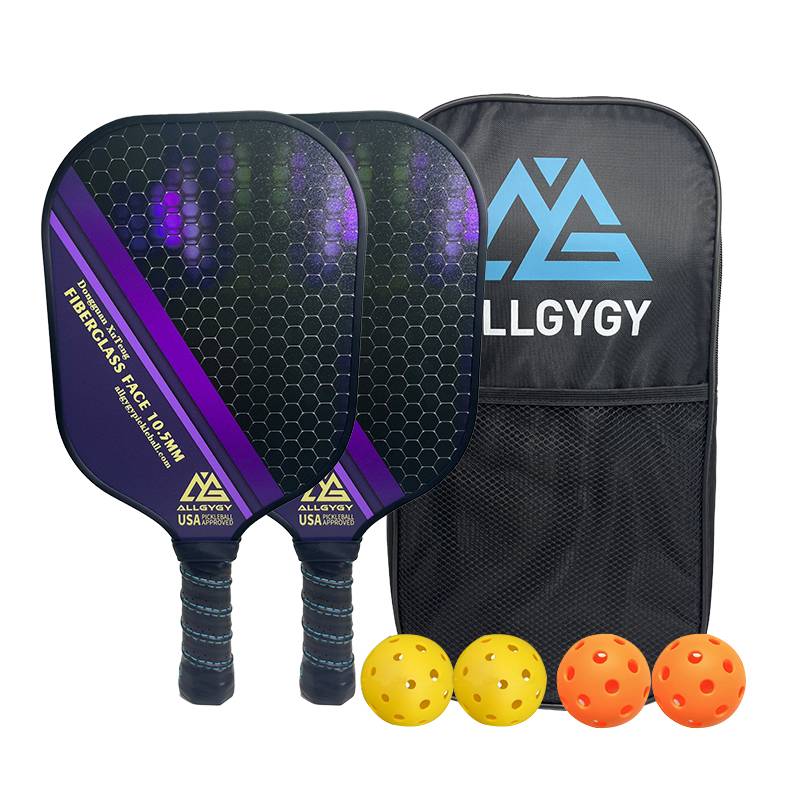Choosing the Right Pickleball Paddle: A Guide to Materials, Design, and Performance
2025-04-23
Pickleball has surged in popularity over the last few years, becoming a favorite sport for people of all ages. Its combination of elements from tennis, badminton, and table tennis has made it a fun and accessible game for beginners and seasoned athletes alike. One of the most important pieces of equipment in the game of pickleball is the paddle. While pickleball paddles may appear similar at first glance, there is a surprising amount of variety in terms of design, material, and performance, which can have a significant impact on a player's game.
Pickleball paddles are typically smaller and lighter than tennis rackets, which allows for more control and quicker reactions. They are generally made from three main types of materials: wood, composite, and graphite. Wood paddles were the original type used in the game and remain a popular, cost-effective option. While they are durable and offer a good balance of power and control, wood paddles can be heavier than their more modern counterparts, which might make them less suitable for fast-paced games.
Composite paddles, made from a blend of materials like fiberglass and polymer, have become the most popular choice for players at all skill levels. These paddles offer a combination of durability, lightness, and power. The core material is often made from a polymer honeycomb, which contributes to the paddle's responsiveness and helps reduce vibrations. This core design allows for a greater balance between power and control, making composite paddles a favorite among both casual players and professionals.
Graphite paddles are another advanced option, offering the lightest weight and the highest level of precision. The graphite face provides an exceptional level of control, allowing for very accurate shots. These paddles are typically favored by players who prioritize control and finesse over raw power. They are often more expensive than wood or composite paddles, but their performance can be worth the investment for serious players.
When selecting a pickleball paddle, the weight of the paddle is one of the most important factors to consider. Paddles can range from light to heavy, and the weight you choose should depend on your playing style and preferences. Lighter paddles, usually under 7.5 ounces, provide more maneuverability and faster reaction times. These paddles are ideal for players who rely on quick reflexes and control. Heavier paddles, typically over 8 ounces, generate more power and stability but may require more effort to maneuver. Many players find a medium-weight paddle to be the best balance between power and control.
Grip size is another crucial aspect of choosing the right paddle. The grip should feel comfortable in your hand and allow for a secure hold without being too tight or too loose. A grip that is too small can lead to excessive wrist movement and fatigue, while a grip that is too large can cause discomfort and reduce control. Most paddles come in a variety of grip sizes to accommodate different hand sizes, allowing players to find the best fit for their style.
The design and shape of the paddle can also affect performance. Paddles come in different shapes, including traditional, wide-body, and elongated designs. Traditional paddles have a classic oval shape, providing a balanced sweet spot for both control and power. Wide-body paddles offer a larger sweet spot, making them more forgiving and easier to play with, especially for beginners. Elongated paddles offer a larger reach, allowing players to generate more power with each swing but may sacrifice some control and maneuverability in the process.
In addition to material, weight, and shape, the texture of the paddle face is also important. Some paddles have a rough or textured surface, which can enhance grip on the ball and provide more spin. Players who enjoy adding spin to their shots will often opt for paddles with textured surfaces, as this feature allows for more control when hitting the ball at various angles.
Choosing the right pickleball paddle depends largely on the individual player's preferences and style of play. A player who enjoys fast exchanges and quick reactions may prefer a lighter, more responsive paddle, while someone who focuses on generating power and spin may gravitate toward a heavier, textured option. It is always recommended to test out different paddles before making a decision, as the feel of the paddle in your hand can make all the difference in your game.
Pickleball is a dynamic sport that can be played casually for fun or competitively at a high level. The right paddle can help elevate a player's performance, allowing them to play more comfortably and effectively. As the sport continues to grow, advancements in paddle technology will likely continue, offering new materials, designs, and features that improve the overall playing experience. For now, finding the perfect pickleball paddle is all about understanding your own preferences and playing style, ensuring that each game is as enjoyable as possible.



